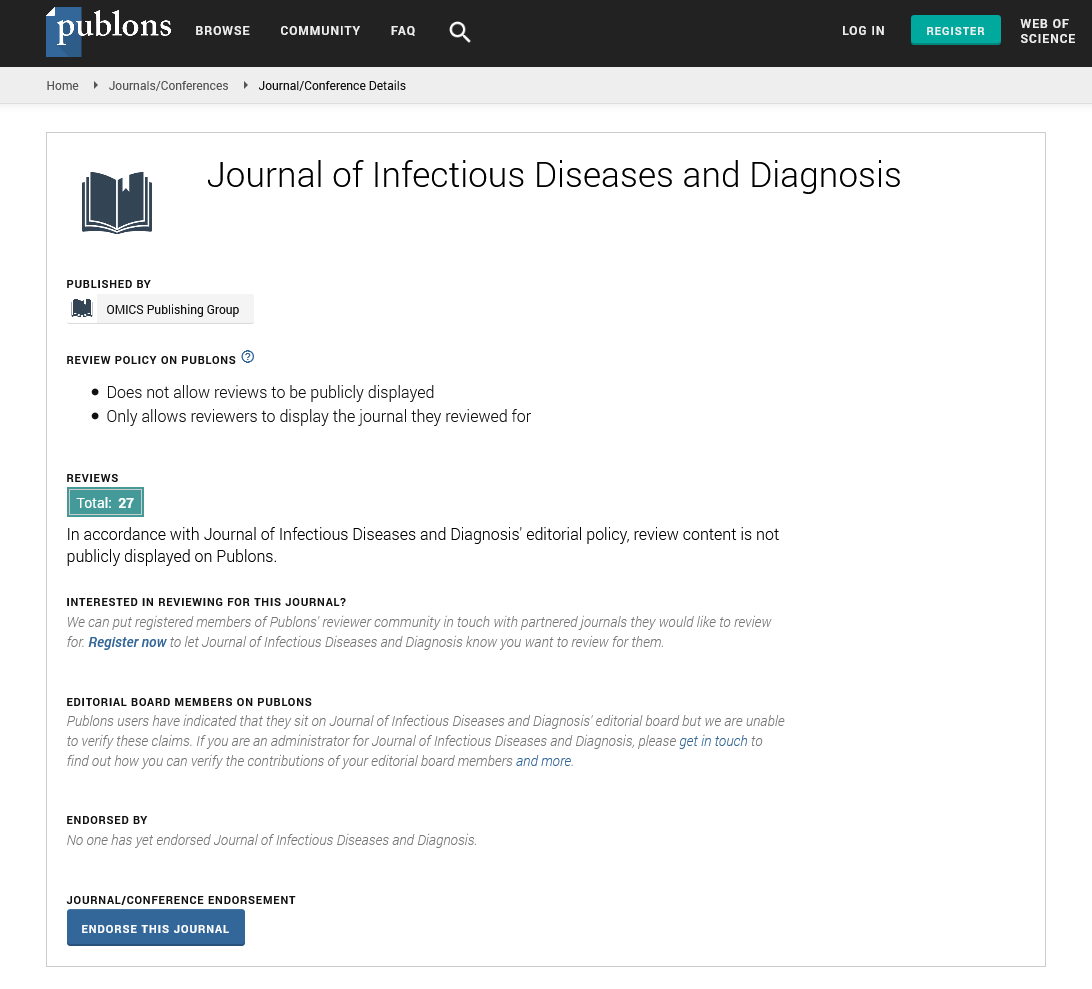Indexed In
- RefSeek
- Hamdard University
- EBSCO A-Z
- Publons
- Euro Pub
- Google Scholar
Useful Links
Share This Page
Journal Flyer

Open Access Journals
- Agri and Aquaculture
- Biochemistry
- Bioinformatics & Systems Biology
- Business & Management
- Chemistry
- Clinical Sciences
- Engineering
- Food & Nutrition
- General Science
- Genetics & Molecular Biology
- Immunology & Microbiology
- Medical Sciences
- Neuroscience & Psychology
- Nursing & Health Care
- Pharmaceutical Sciences
Commentary - (2025) Volume 10, Issue 5
Diagnostic Techniques and Epidemiological Monitoring for Swine Influenza
Marcus Hargrove*Received: 29-Aug-2025, Manuscript No. JIDD-25-30291; Editor assigned: 01-Sep-2025, Pre QC No. JIDD-25-30291 (PQ); Reviewed: 15-Sep-2025, QC No. JIDD-25-30291; Revised: 22-Sep-2025, Manuscript No. JIDD-25-30291 (R); Published: 30-Sep-2025, DOI: 10.35248/2576-389X.25.10.350
Description
Swine influenza remains a significant concern for public health due to its ability to infect both animals and humans, sometimes causing outbreaks that challenge healthcare systems. Early and precise identification of the virus is essential to manage cases effectively and prevent wider transmission. While clinical symptoms often resemble those of seasonal influenza, subtle differences may indicate swine influenza infection. Common signs include fever, fatigue, cough, sore throat, headaches and muscle aches. Severe cases can lead to respiratory complications, highlighting the importance of timely detection.
Initial recognition of potential infection is often based on patient evaluation and history. Exposure to pigs, visits to agricultural settings or contact with individuals known to have swine influenza increases suspicion of infection. Clinical observation alone, however, is insufficient to confirm diagnosis due to symptom overlap with other respiratory illnesses. Laboratory testing provides the definitive means of identification, with several techniques available, each offering distinct advantages and limitations.
Rapid antigen detection tests are frequently used as an initial screening tool. They identify viral proteins in respiratory samples, offering quick results that can guide immediate decisions in clinical settings. Despite their speed, the accuracy of these tests is limited, particularly when the virus is present at low levels in the patient. A negative result does not necessarily rule out infection and further molecular testing is often recommended.
Molecular diagnostic assays are widely considered dependable for confirming swine influenza. They detect viral genetic material with high sensitivity and specificity, enabling precise strain identification. This supports effective monitoring of circulating variants and helps interpret epidemiological trends. Samples are typically obtained through nasal or throat swabs, and strict adherence to collection and handling protocols is essential to ensure reliable results. While RT-PCR is highly effective, its dependence on specialized laboratory equipment and trained personnel can limit accessibility, especially in low-resource regions.
Serological testing complements molecular approaches by identifying antibodies produced in response to infection. Although it cannot detect early-stage illness, it is valuable for assessing population-level exposure and immunity. This information can guide vaccination strategies and evaluate the impact of outbreaks over time. Viral culture remains a specialized diagnostic method, allowing scientists to study virus behaviour, evaluate antiviral susceptibility and support research initiatives. Proper biosafety measures are necessary when performing viral cultures to prevent accidental exposure.
Emerging diagnostic technologies are focused on reducing time and complexity in detecting swine influenza. Point-of-care devices, biosensors and microfluidic platforms offer potential for rapid testing outside traditional laboratories. Immunoassays designed for clinical or field use can provide results in a matter of hours, which is beneficial for immediate patient management and containment measures. Such innovations are particularly relevant in remote or under-resourced areas, where access to centralized laboratories may be limited.
Effective identification of swine influenza also relies on robust surveillance systems. Continuous monitoring of swine populations and human cases enables health authorities to detect abnormal patterns of illness early. Collaboration between veterinary and public health sectors is essential, given the virus’s potential to cross species barriers. Early detection facilitates interventions such as isolation, treatment and preventive measures, which help reduce the spread of infection. Public awareness campaigns also play a role, encouraging individuals to report symptoms promptly and seek medical care, which supports early case identification.
Despite progress, challenges remain in ensuring timely and accurate diagnosis. Access to molecular testing is uneven globally and delays in testing and reporting can affect response measures. The virus’s tendency to mutate may impact the effectiveness of existing assays, requiring ongoing updates to diagnostic protocols. Strengthening laboratory capacity, improving access to healthcare and educating communities about early symptom recognition are essential strategies for improving identification and control of swine influenza.
In conclusion, identifying swine influenza requires a multipronged approach that combines careful clinical assessment, laboratory testing and surveillance. Rapid antigen tests, RTPCR, serology and viral culture each provide essential insights for managing the infection. New diagnostic tools offer the potential for faster, more accessible detection, but challenges related to infrastructure, resource availability and viral variability persist. Coordinated efforts among healthcare providers, researchers and public health authorities remain essential to recognize infections early and minimize the impact of this disease on both human and animal populations.
Citation: Hargrove M (2025). Diagnostic Techniques and Epidemiological Monitoring for Swine Influenza. J Infect Dis Diagn. 10:350.
Copyright: © 2025 Hargrove M. This is an open-accessarticle distributed under the terms of the Creative Commons Attribution License, which permits unrestricted use, distribution and reproduction in any medium, provided the original author and source are credited.

